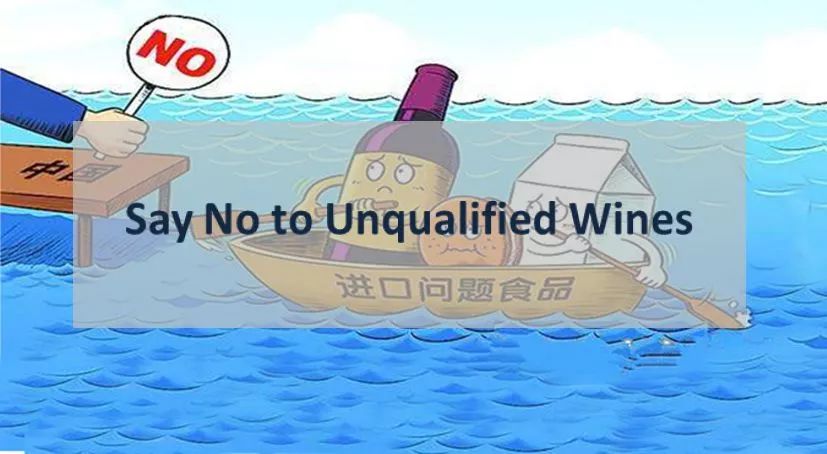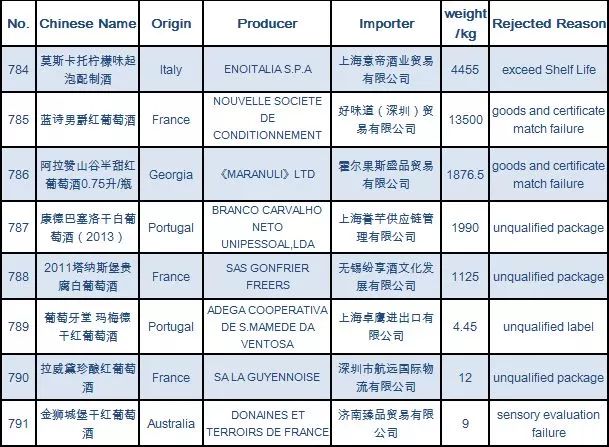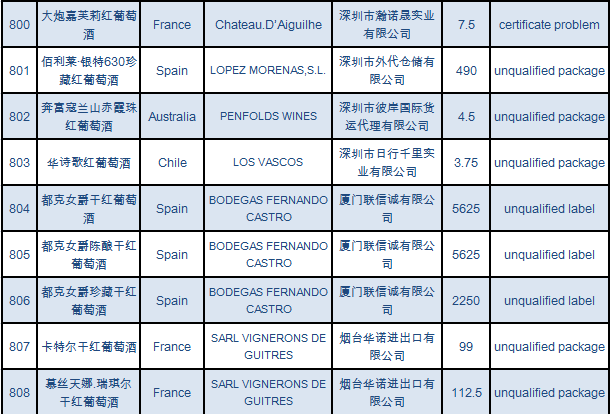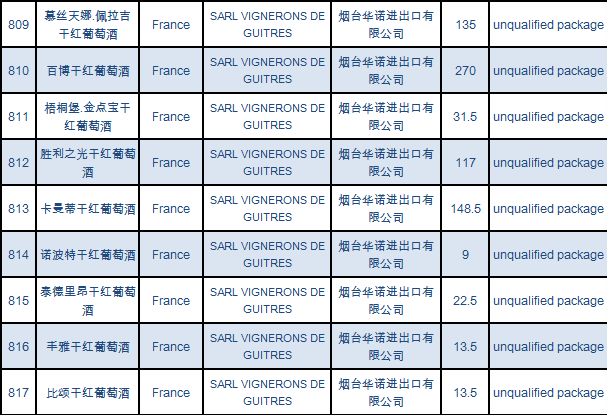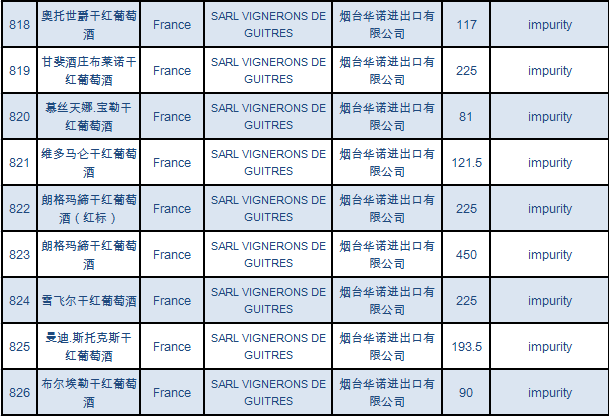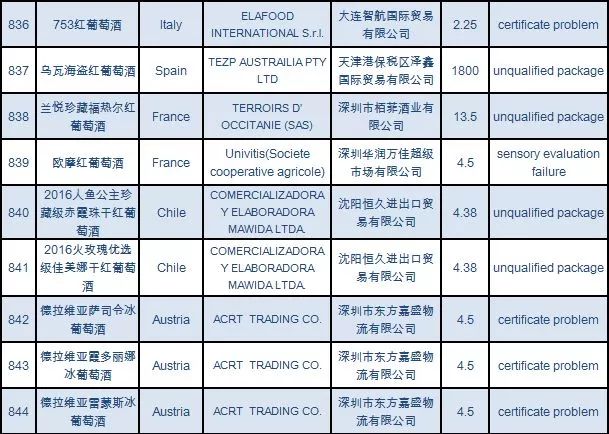69 Batches of Wines That Judged Unqualified by CIQ
Write | WBO Morris
Translate and Edit | WBO Kiwi
According to AQSIQ (General Administration of Quality Supervision, Inspection and Quarantine of the People's Republic of China), in its “information on food and cosmetic products not allowed in November 2017”, 69 batches of wines were judged unqualified by CIQ (China Entry-Exit Inspection and Quarantine Bureau) and were refused entry.
Among these unqualified wines, package problem accounted for 26 batches, no required certificate or documents accounted for 22 batches, labels problem accounted for 5 batches, goods and certificate match failure accounted for 3 batches, beyond shelf life was 1 batches, sensory evaluation failure was 3 batches, and containing impurities accounted for 9 batches.
A total of 69 batches of unqualified wines were on that list, including 66 batches of bottled wines, 1 batch of bulk wines, and the 2 batch of sparkling wines.
Unqualified packaging is a “high-probability event”
Two types of unqualified packaging are in general. One is a wooden box or pallet without signs of IPPC, which means no fumigation, will lead to the failure in entering into China. The other is carton packaging damaged in the process of transportation.
In comparison, the second occurs more.
Through many researches, WBO found that after being judged unqualified, wines and damaged or contaminated cartons will be destroyed, but complete package can be used as a normal sale after customs clearance.
Highlight certificate and documents problem
A total of 22 batches of wines failed in November, which was not qualified in required certificate or documents.
Zhang Xinchun, general manager of Jiangsu Saintfruit Wines, analyzed, imported wines must provide complete documents in customs clearance, such as certificate of origin, proof of bottling date, component analysis report, grape varieties, health analysis and certificate of free sales.
In addition, there were 3 batches of wines fail to match with certificate in November last year, which can be seen as a serious problem resulting in the unqualified wine.
How does “impurities” imply?
Most wine business insiders think that small amount of sediment in wine is reasonable.
Based on national standard GB GB/T 15037-2006, wine quality were classified in 5 grades, which allows small amount of sediment in qualified wines.
However, some wines were detected with obvious sediment, even with unfiltered grape skins and pips. Some were detected cullet inside unopened bottles. These are all disqualified wines containing impurities.
According to a market observer, the problem also revealed bad level of foreign wine suppliers, who produced extremely poor quality wines.
Sensory evaluation failure means bad quality
Of all 69 batches of unqualified wines, 3 batches were failed in sensory evaluation. “This is also because of the poor quality”, Zhang said.
Importers must look for suppliers with good reputation, better to investigate by visiting them and inquire about their strength via other business insiders. When encountering seeming good wines in too low price, be aware of the reason behind, do not judge wines only by price tag”, Zhang said.
As for how to avoid these wine problems, observer He Xiaolong pointed out, importers must get all materials ready before Customs declaration, selecting high-quality foreign suppliers, high-quality freight transport and custom clearance company.
